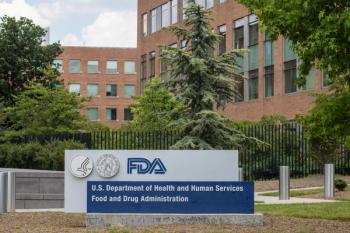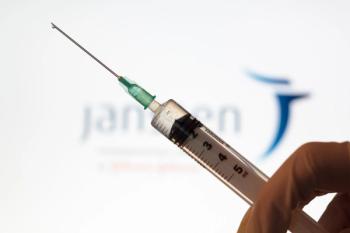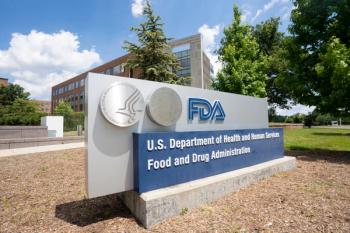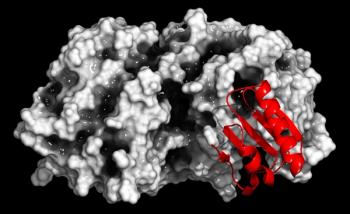
Expert: Pharmacists Are Essential When Monitoring Patients On T Cell-Directed Therapies
Banerjee also discussed data being presented at the International Myeloma Society 2024 Annual Meeting that he is particularly excited for this year.
In an interview with Pharmacy Times, Rahul Banerjee, MD, FACP, discussed the roles pharmacists can play when managing patients with myeloma who are receiving T cell-directed therapies such as bispecific antibodies or CAR T-cell therapy. Banerjee also discussed data being presented at the International Myeloma Society 2024 Annual Meeting that he is particularly excited for this year.
Q: How can pharmacists play a role in monitoring patients receiving T cell-directed therapies and managing potential adverse effects?
Rahul Banerjee, MD, FACP: Yeah, absolutely. So, our pharmacist colleagues are essential for helping us with these toxicities. I would group the toxicities of T cell-redirecting therapies into short term and long term. So short term, everyone talks about CRS, right? Cytokine release syndrome is like the reason for the REMS program, it’s the reason why some people get hospitalized for CAR T or bispecifics, etc. And then under the delayed toxicities for BCMA bispecifics, for example, infections are a big one for patients for talquetamab, which is a GPRC5D bispecific, it's often taste issues like dysgeusia, nail issues, skin issues, you know, phenomena like that, because of how GPRC5D is expressed. And then for BCMA CAR T, again, after cycle 2 day 1, or after day 28 I should say, typically, it's effects are still a risk. However, you know, there are other things like Parkinsonism, gait instability, Guillain Barre syndrome, I've seen nerve palsies, things like that.
In terms of how pharmacists can be helpful here, I think with bispecifics in particular, for the acute setting, I think CRS is so heavily protocolized in most institutions, I don't think that pharmacists or even physicians are playing that big of a role. Really, it's our nursing colleagues taking this by the leads. When the patient calls, everything's prescribed, everything's ready, we have an SOP that we follow, and so forth. I think they can be helpful for CAR T to recognize kind of unusual toxicities, especially as a smaller, newer center to pick up CAR T therapy. In particular, it’s worth noting that it's not just CRS. So, I've had patients get IEC-HS, which is immune effector cell–associated HLH syndrome. HLH is hemophagocytic lymphohistiocytosis, a very rare toxicity, treated differently, often with anakinra. Often, honestly, it's been our pharmacists who are like “This doesn't look right for cytokine release syndrome, something else is going on,” and they can help to identify those rare toxicities.
I think where [pharmacists] have been super helpful for our team is with IVIG and the risk of infections after BCMA bispecifics. Because, again, that is a real risk, that is an ongoing risk, the risk of BCMA, the risk of infections, honestly. There's a recent study that it’s higher with BCMA bispecifics than with BCMA CAR T after the first month. And so, our pharmacists have been extraordinary. They really managed our like, who gets IVIG? What thresholds do we use for IVIG, if any? What other antimicrobial prophylaxis do our patients need and for how long? Should we talk about revaccinating our patients? And if so, should we wait for IVIG? And so forth. And I think that, because that is the Achilles heel of BCMA bispecifics. And I think pharmacists know how to treat infections better than physicians do in a lot of ways, in terms of the actual dosing and details and so forth. So, they've been instrumental there for the delayed toxicities of talquetamab, the tongue issues, the taste, the nail issues.
Unfortunately, we as a field are still trying to figure out how best to manage these. There's no silver bullet. There's no magic one-time solution that helps. But I will say that oftentimes I have asked our pharmacists because they represent our entire myeloma program, and I have had cases where they're like, “Oh, well, you know this other patient, but this other physician, they tried oral mouthwash.” Or, I’m trying to think of the most creative solution—zinc, I had a lot. I don't know if it works or not, but I think our pharmacists have this core knowledge, because, again, they cover several different physicians and they've seen a little bit of everyone getting talquetamab. And so, I think if we start to hear about innovations and AE management with talquetamab, it probably will be from our pharmacist colleagues, or possibly nursing colleagues, even more so than the physicians.
Q: What other data are you paying attention to at IMS 2024?
Banerjee: Yeah, there are a lot of things I'm interested in seeing. One, so CAR T, cilta-cel cell will be shown to have an overall survival benefit in CARTITUDE-4. We already knew about that as a field, because actually, in the ODAC presentation to get CAR T approved for earlier lines, we found out that the European Medicine Agency, the EMA, had actually asked cilta-cel to run these data. We found that there was an overall survival benefit. That will be helpful, right? Because that's a very elite class where, on the lymphoma side, axi-cel has been shown to do that for sure. And here cilta-cel will have done so, as well, in CARTITUDE-4.
One that I'm actually pretty interested in seeing is the AURIGA study, which will be presented. So, the AURIGA study—and you know, there are many ways that one can interpret AURIGA, and we'll talk about all the caveats of it—in brief, it was for patients who'd received the triplet induction, not daratumumab or isatuximab-based induction, so CD38-naive going into this. They had gotten transplant and were still MRD positive, at least 10 out of 1 million after transplant. They were randomized to either daratumumab plus lenalidomide or lenalidomide alone, so dara-rev versus rev alone for maintenance. The primary end point was basically MRD conversion, or switch to MRD negativity. That's what it was powered for. But where I'm looking at the data, because at least for the abstract, they found a PFS benefit, as well, that dara plus Revlimid actually outperformed Revlimid in terms of PFS. And so that's helpful to see. The biggest caveat here, obviously, is it’s only for patients who are MRD positive after transplant. And the other caveat is, again, these are patients who are all CD38 unexposed, and it's unclear how this would translate to patients who are CD38 exposed.
There are other studies. The DRAMMATIC study, for example, is a cooperative study looking at dara plus lenalidomide versus lenalidomide in maintenance, regardless of induction. There is a German study, GMMG-HD7, looking at the same question in isatuximab-exposed patients, so they got isatuximab, going on to isatuximab-lenalidomide versus lenalidomide. So, we're waiting for those data.
You know, I think, up until this presentation, the GRIFFIN and PERSEUS studies, as people listening to this will know, did dara-VRd in the active arm and then dara arm maintenance thereafter, and so that was the default. There was a randomization there. And I think several of us were a little hesitant about that, right? Because we're like, look, it wasn't randomized. We don't really know what's going there. How much of this benefit is from the dara-VRd versus from the dara-lenalidomide? They did show that MRD rates go up over time, but again, we know that therapies can do that anyways, that people can go from already positive to negative. Here, at least, we have randomized data. And you know, lenalidomide, if I recall correctly, the PFS benefit was actually pretty substantial. I think it was like more than a year, if I recall correctly. Even if you took that advantage and cut it in half or by 25% in the setting of patients who had been CD38-exposed, the idea being, if you got daratumumab as part of induction, maybe it wouldn't work as well as part of maintenance. I will openly acknowledge that, however, obviously there is a pause, right, between the last dose of daratumumab pre-transplant and the first dose of daratumumab after transplant. Typically, there’s about a 3- to 4-month pause, logistically speaking. And so, you may start to see some CD38 re-expression. My point being that this has helped. I think now, after seeing the data and some other data presented from PERSEUS and so forth, I think I am starting to lean a little bit more towards daratumumab plus lenalidomide being my default for most patients. If they're high risk, I still try to incorporate a PI if I can for those patients, particularly if deletion 17p plus something else, etc. However, I think daratumumab plus lenalidomide, up until this conference, and probably still for more, there'll be people holding out. But I was a holdout where I was really not promoting daratumumab plus lenalidomide for everybody as maintenance as my default. Now I'm getting a little bit more towards it.
Newsletter
Stay informed on drug updates, treatment guidelines, and pharmacy practice trends—subscribe to Pharmacy Times for weekly clinical insights.














































































































































































































